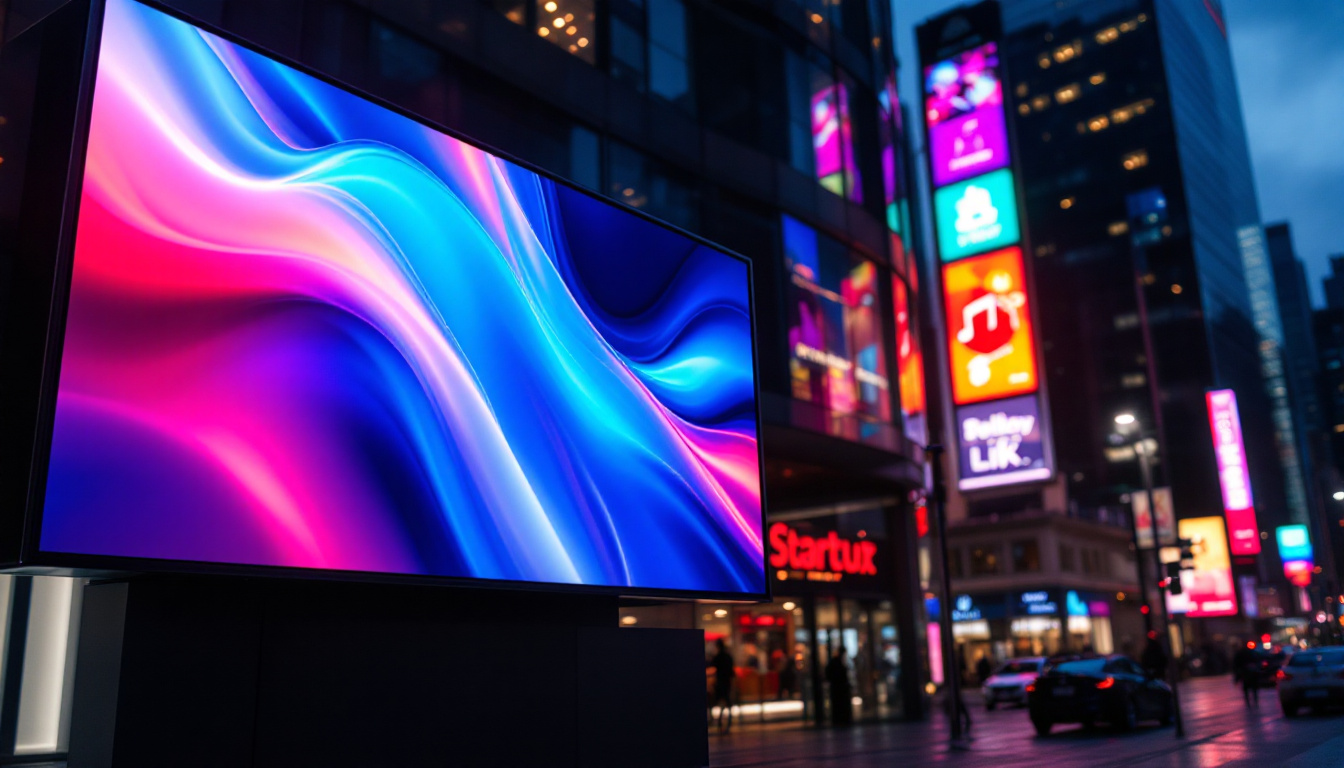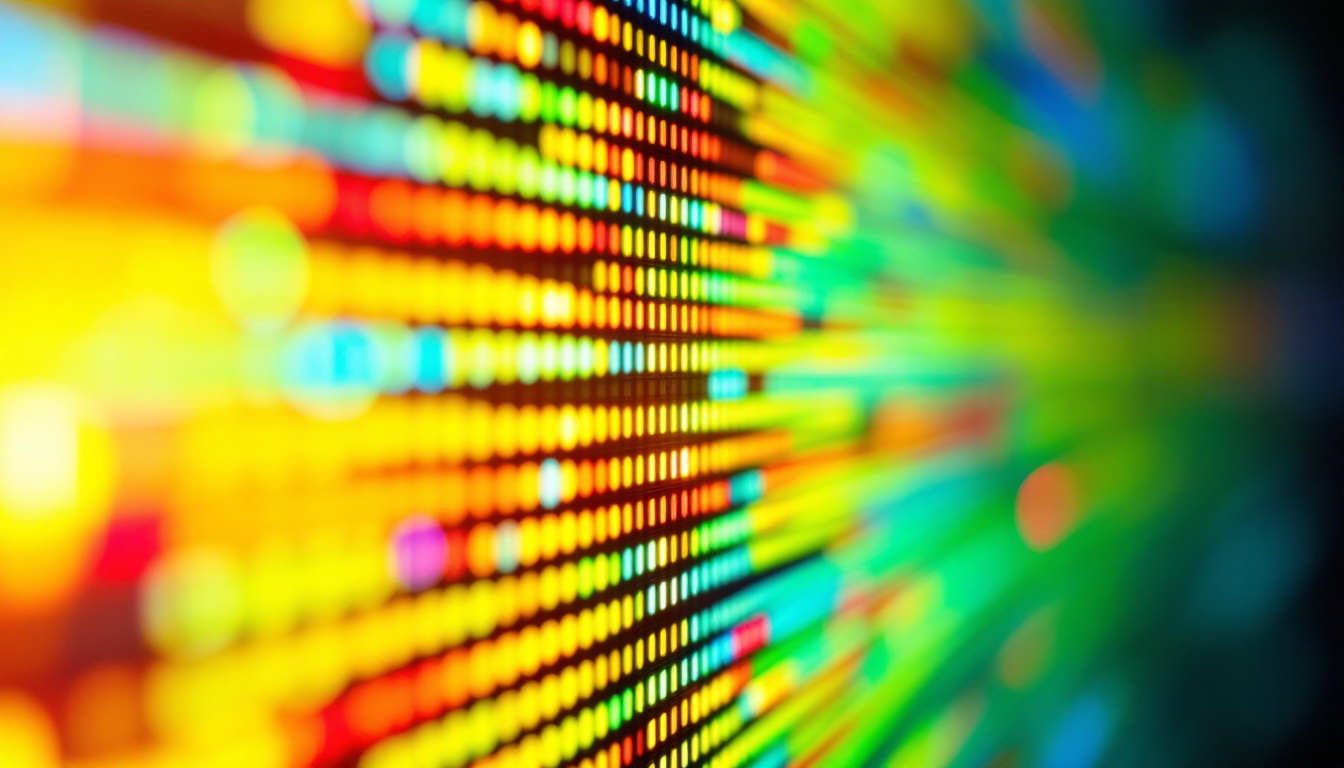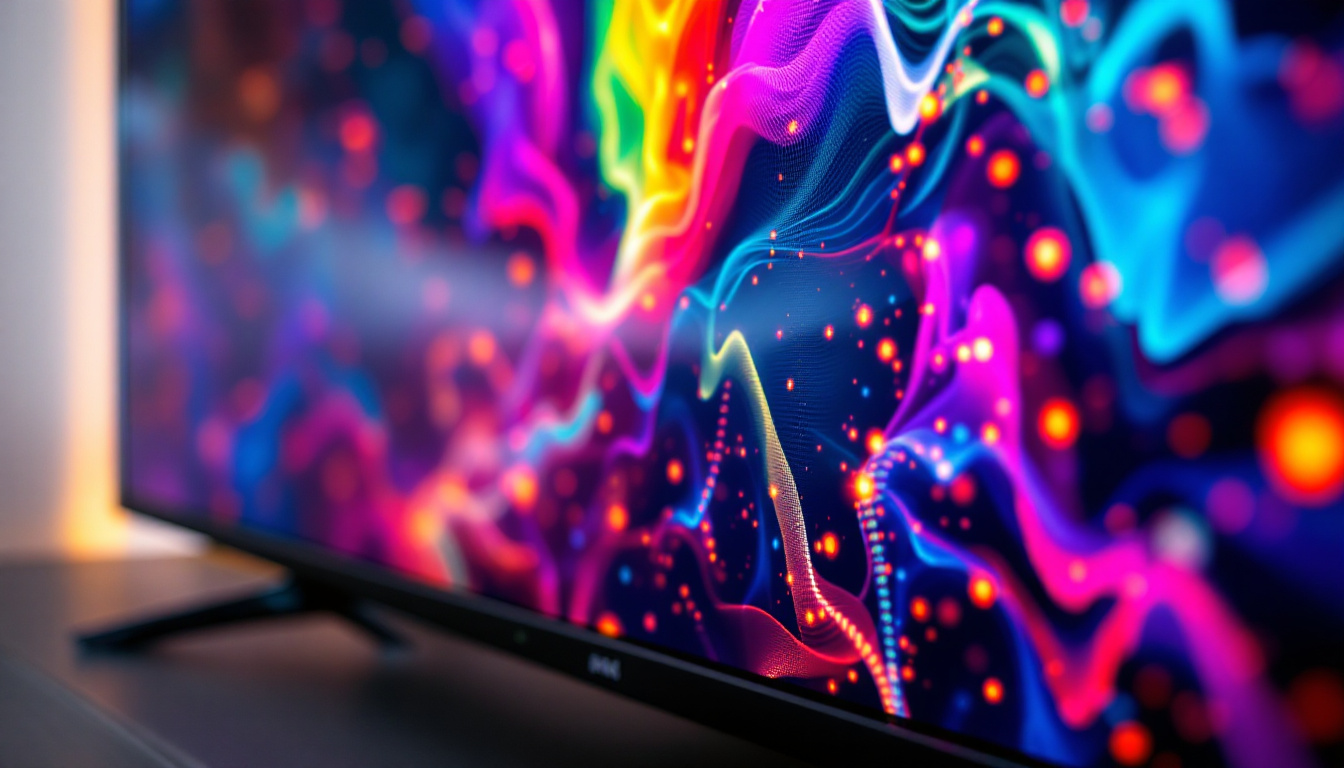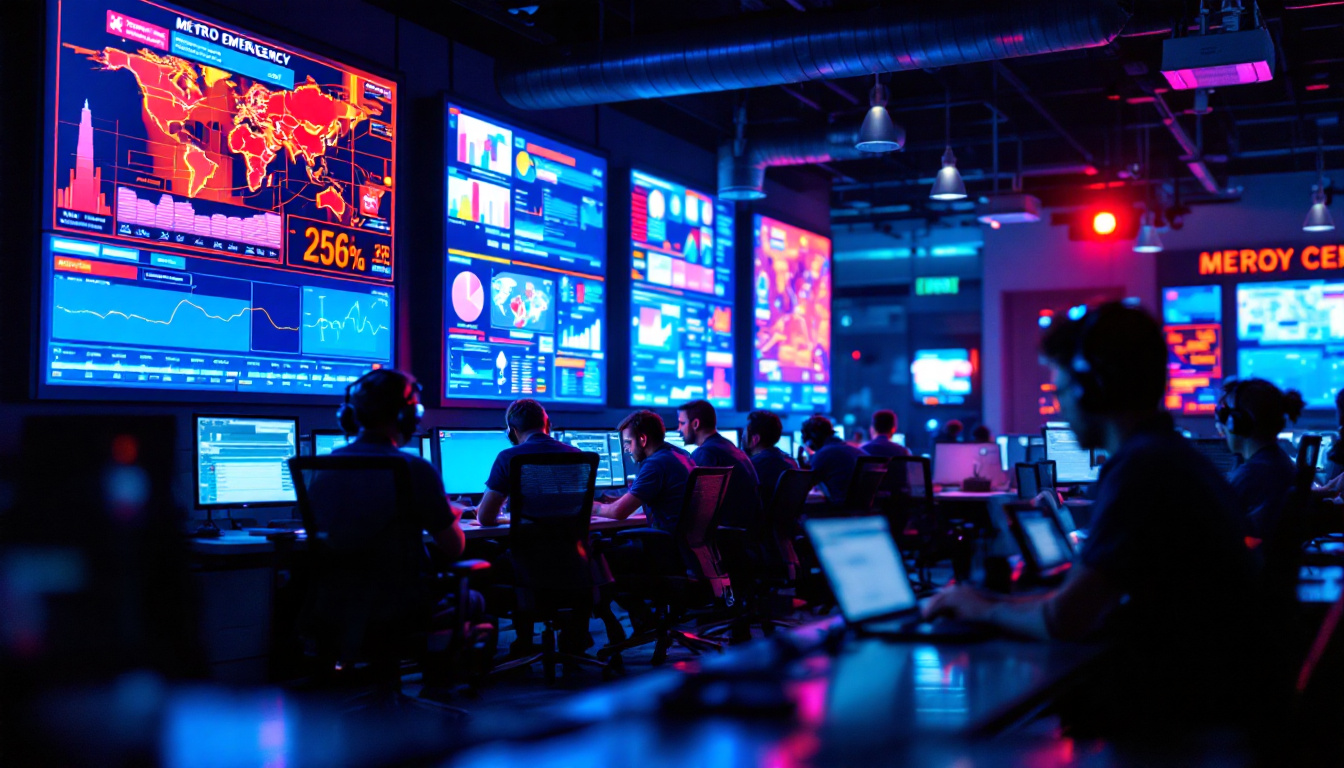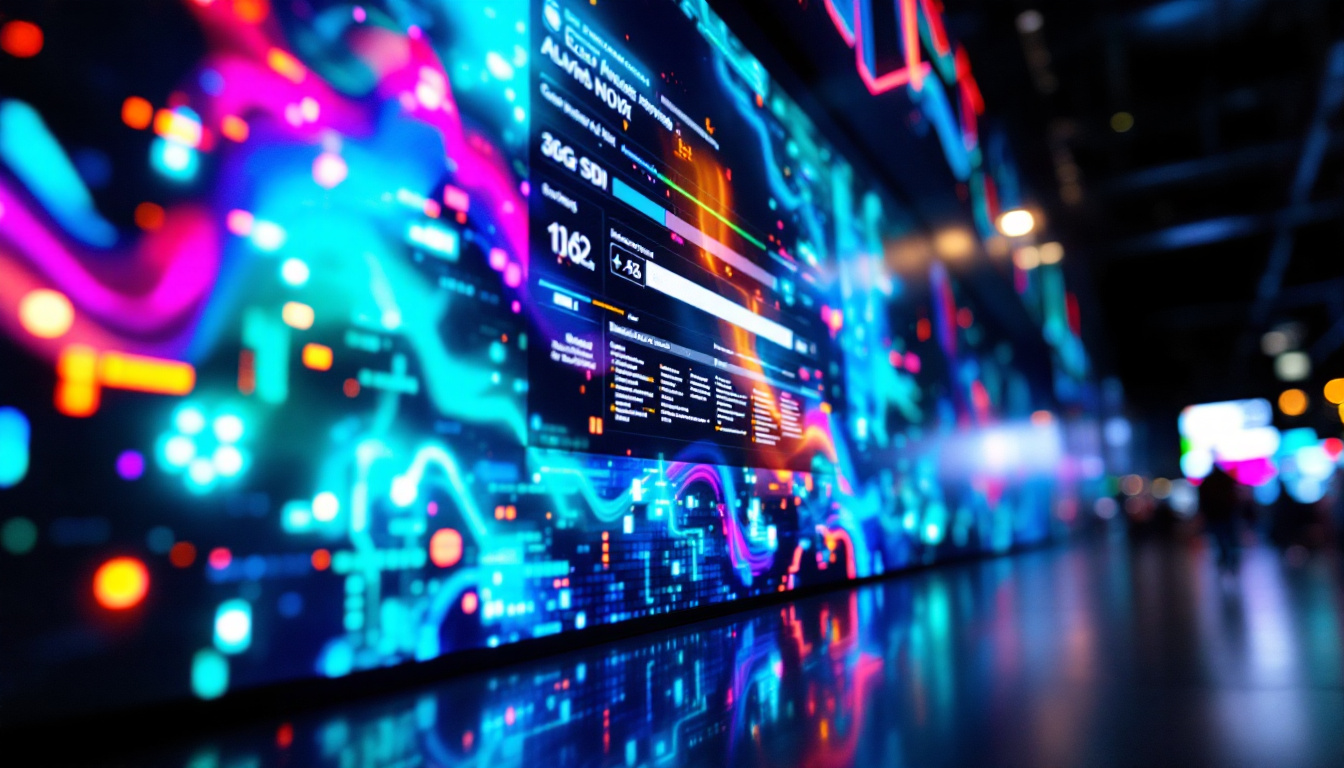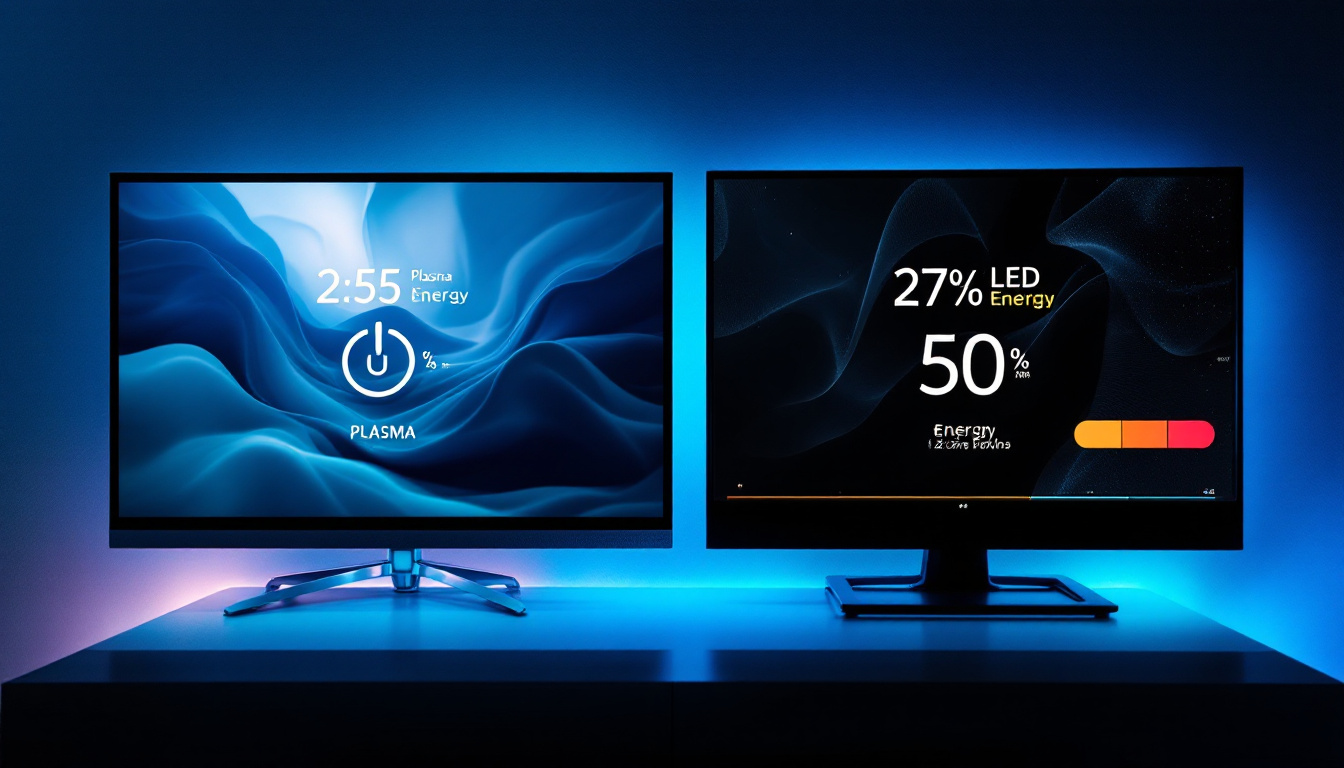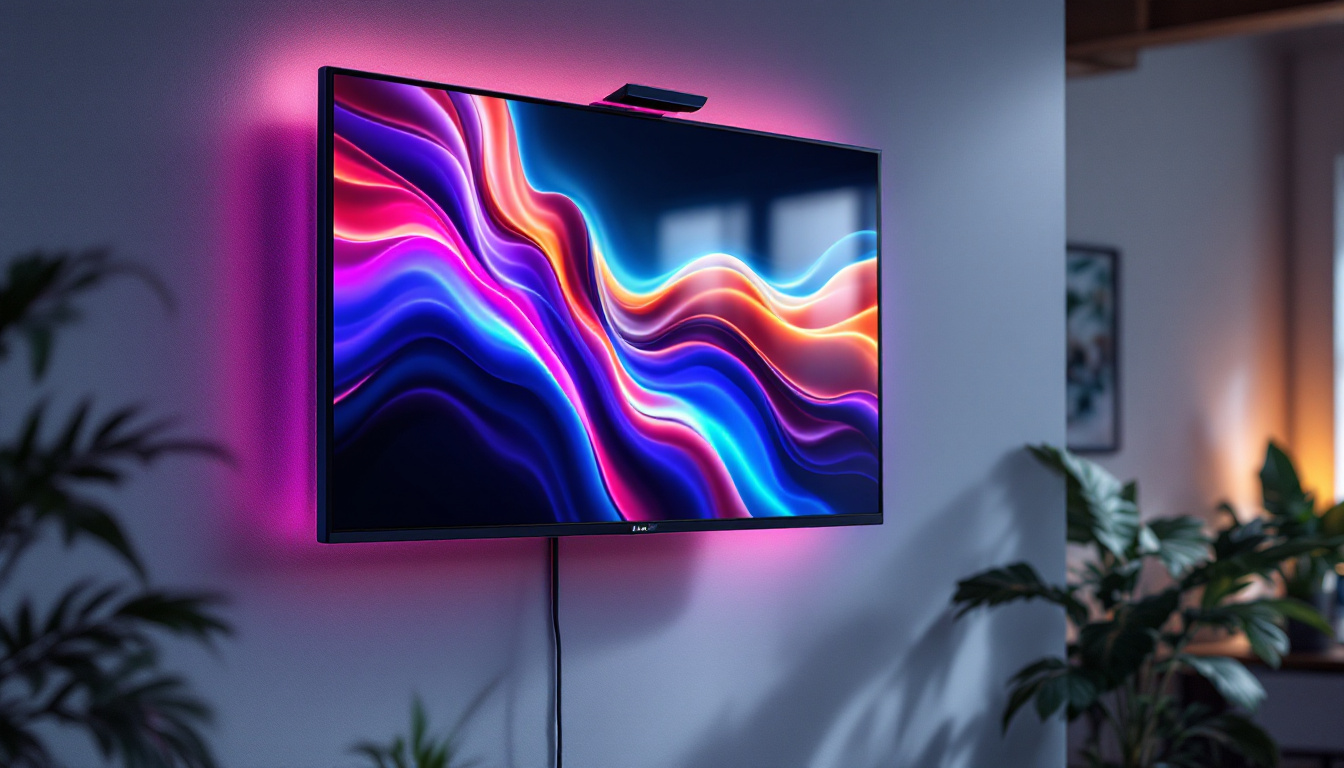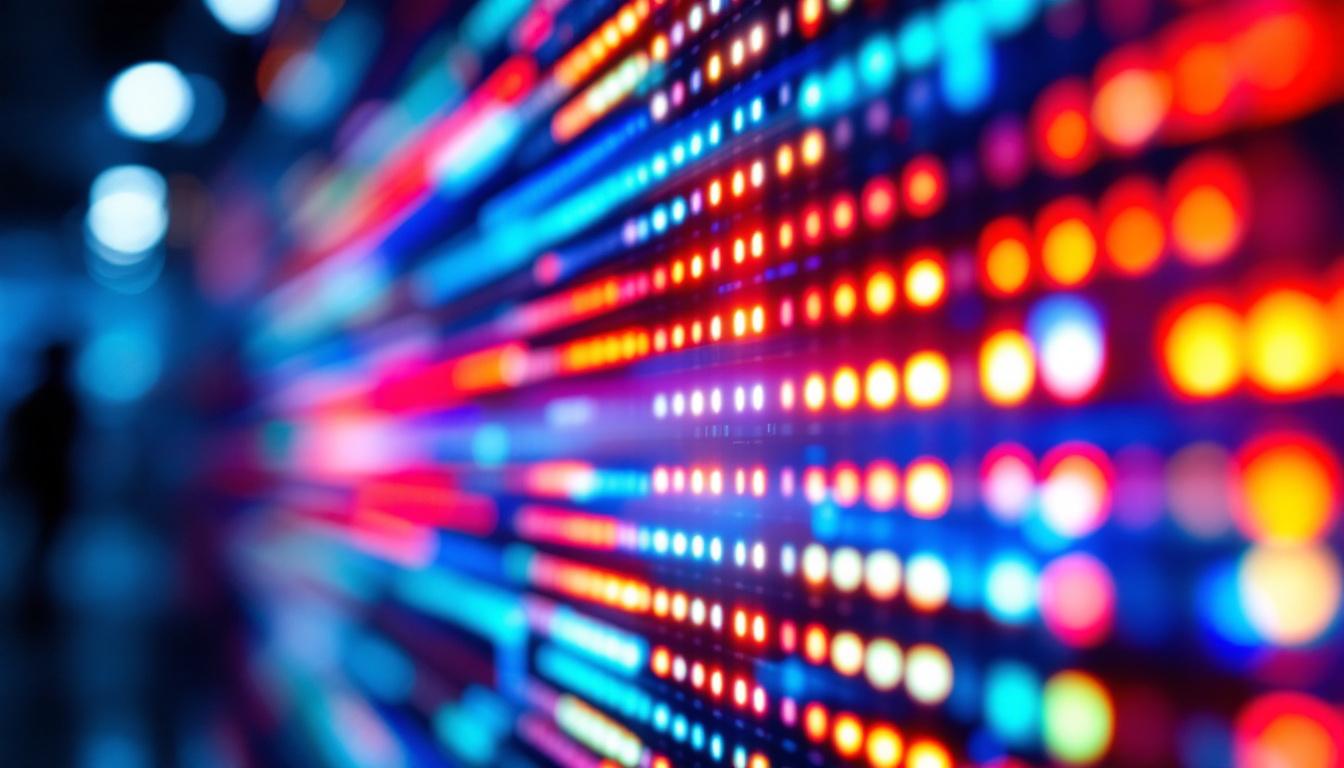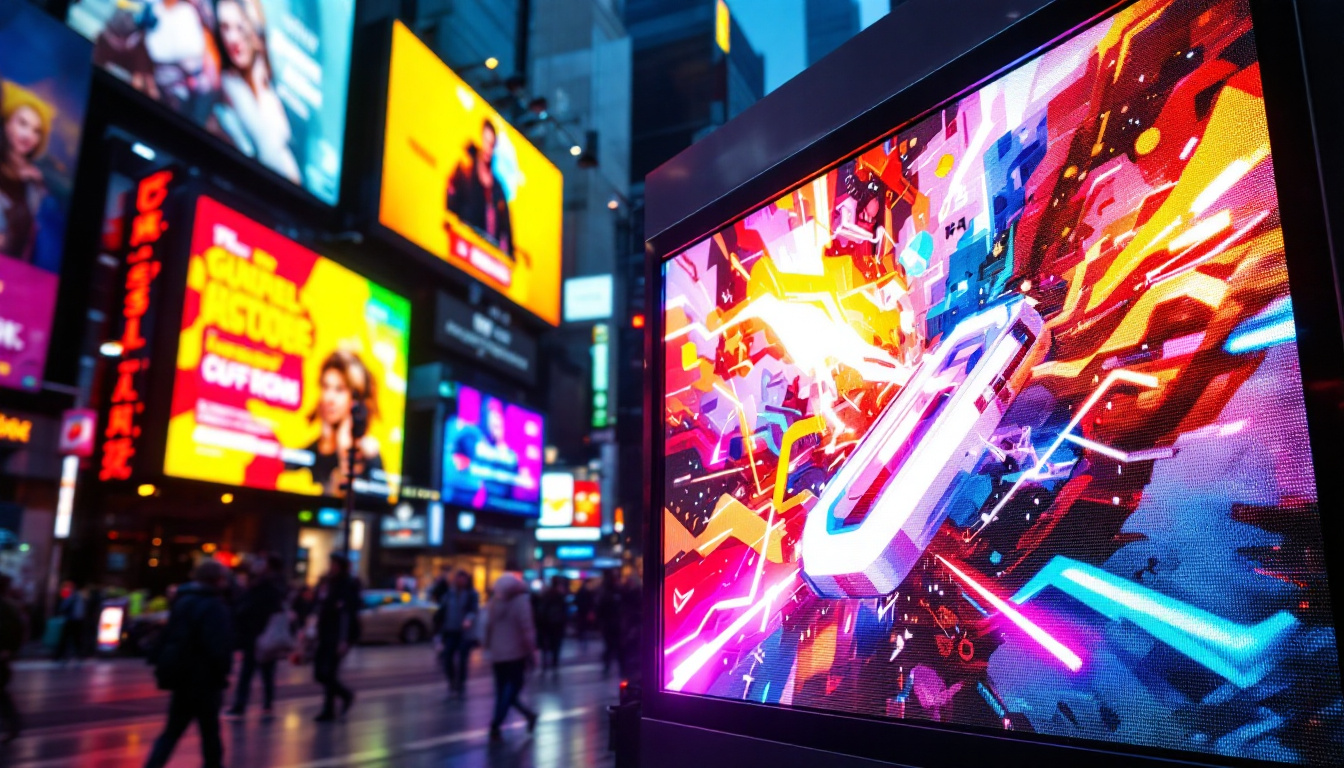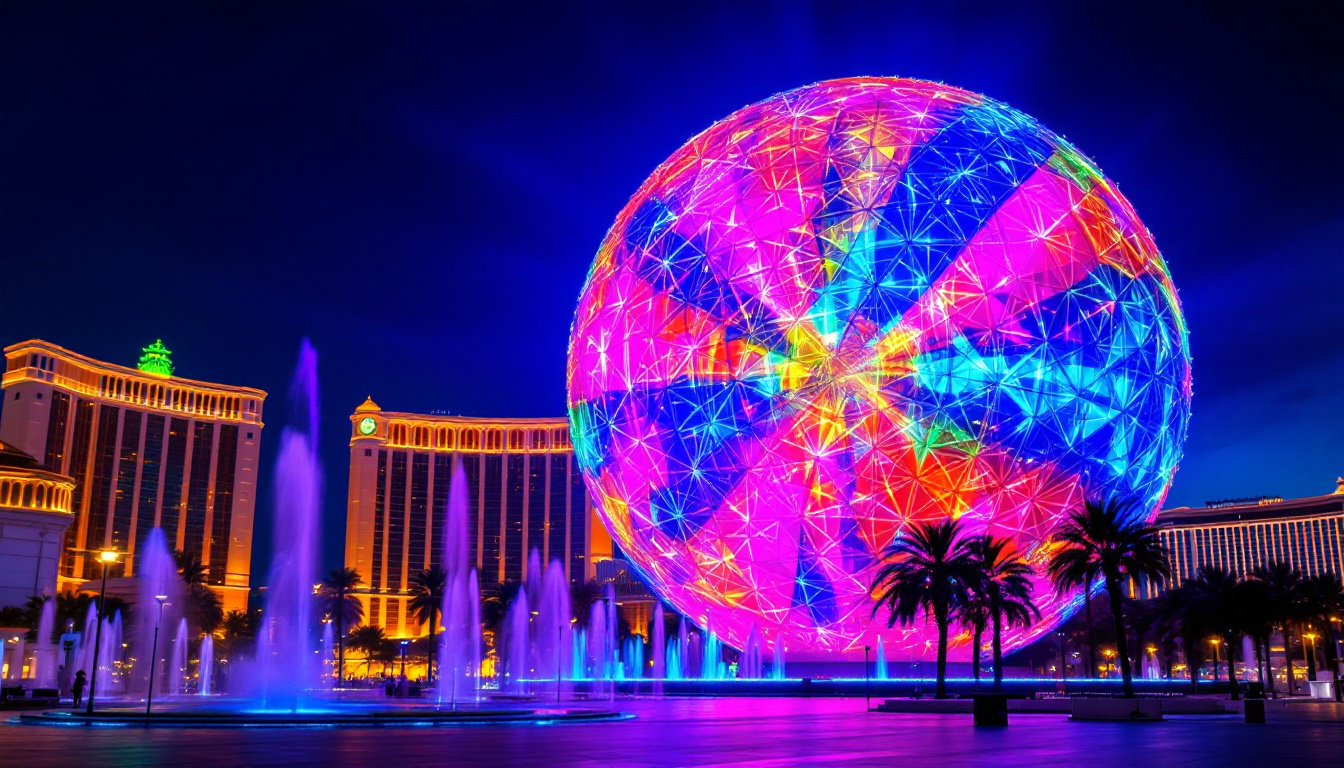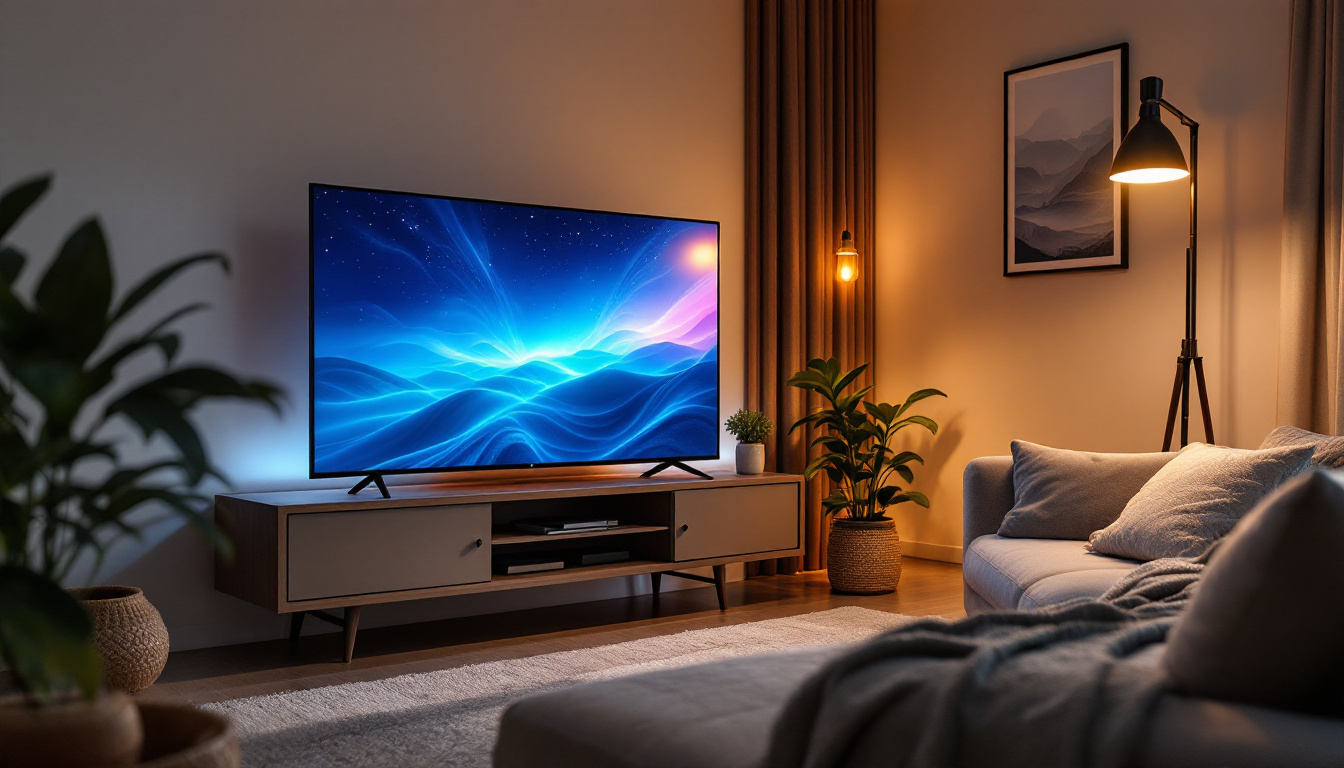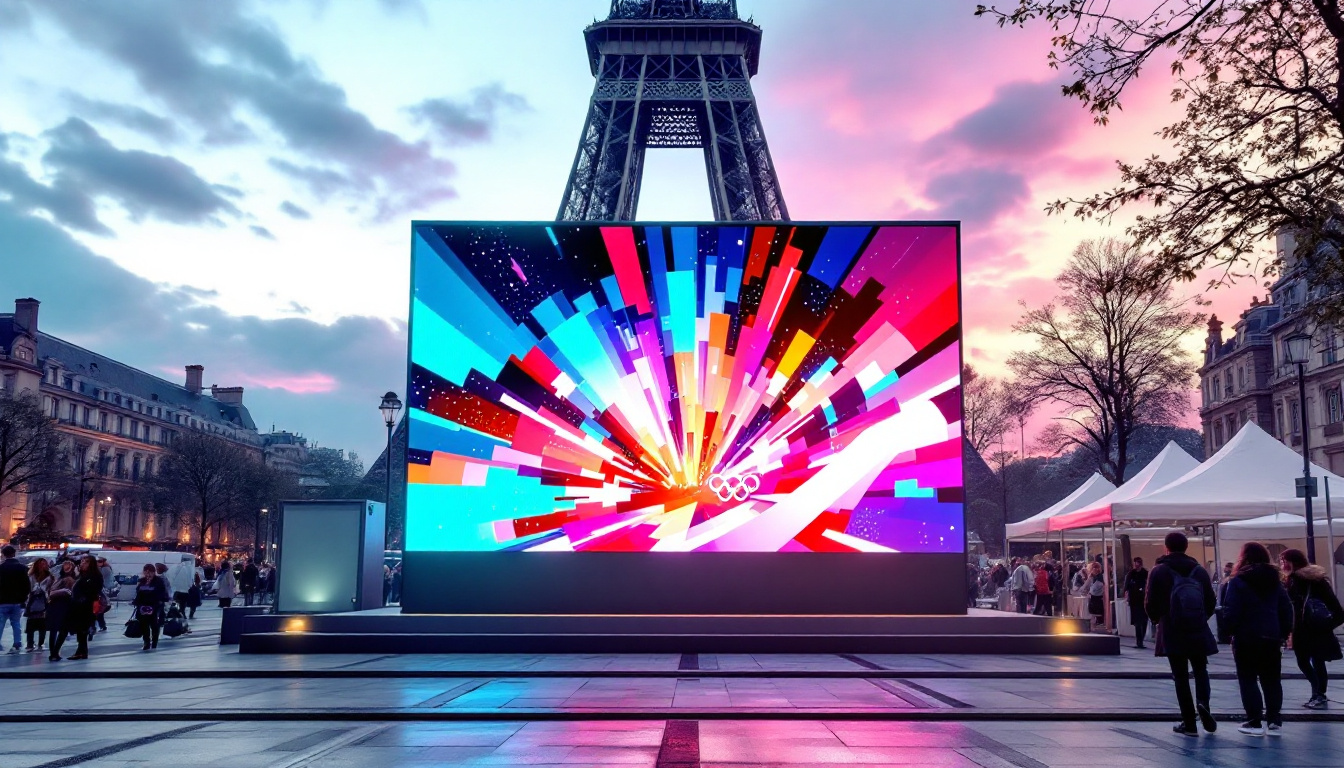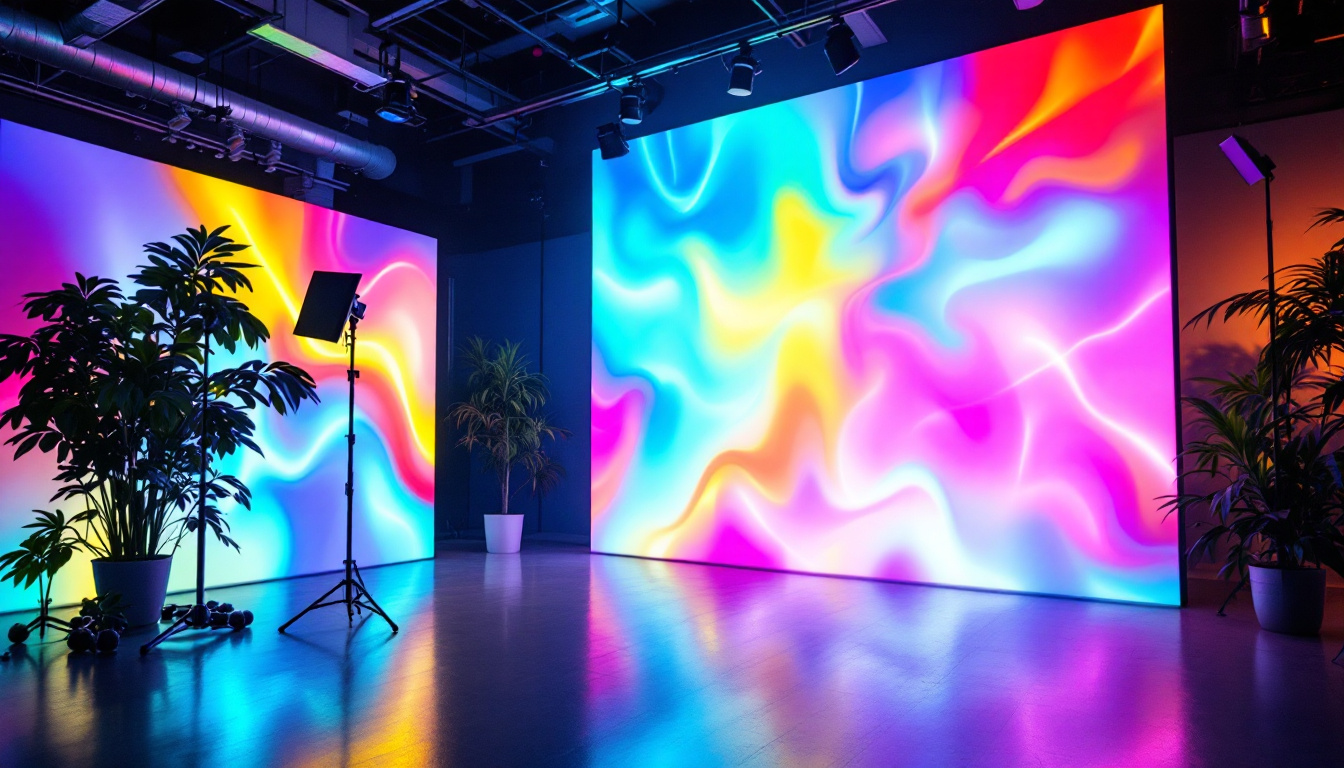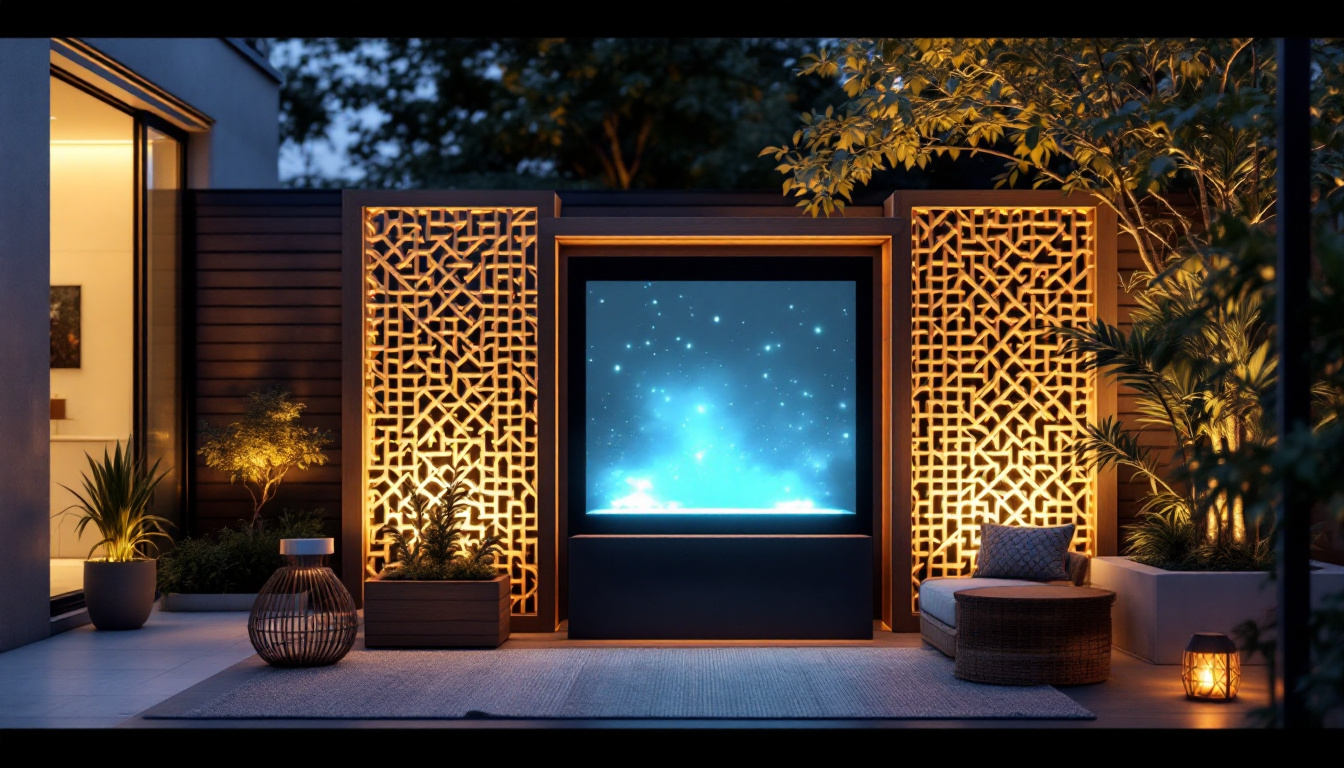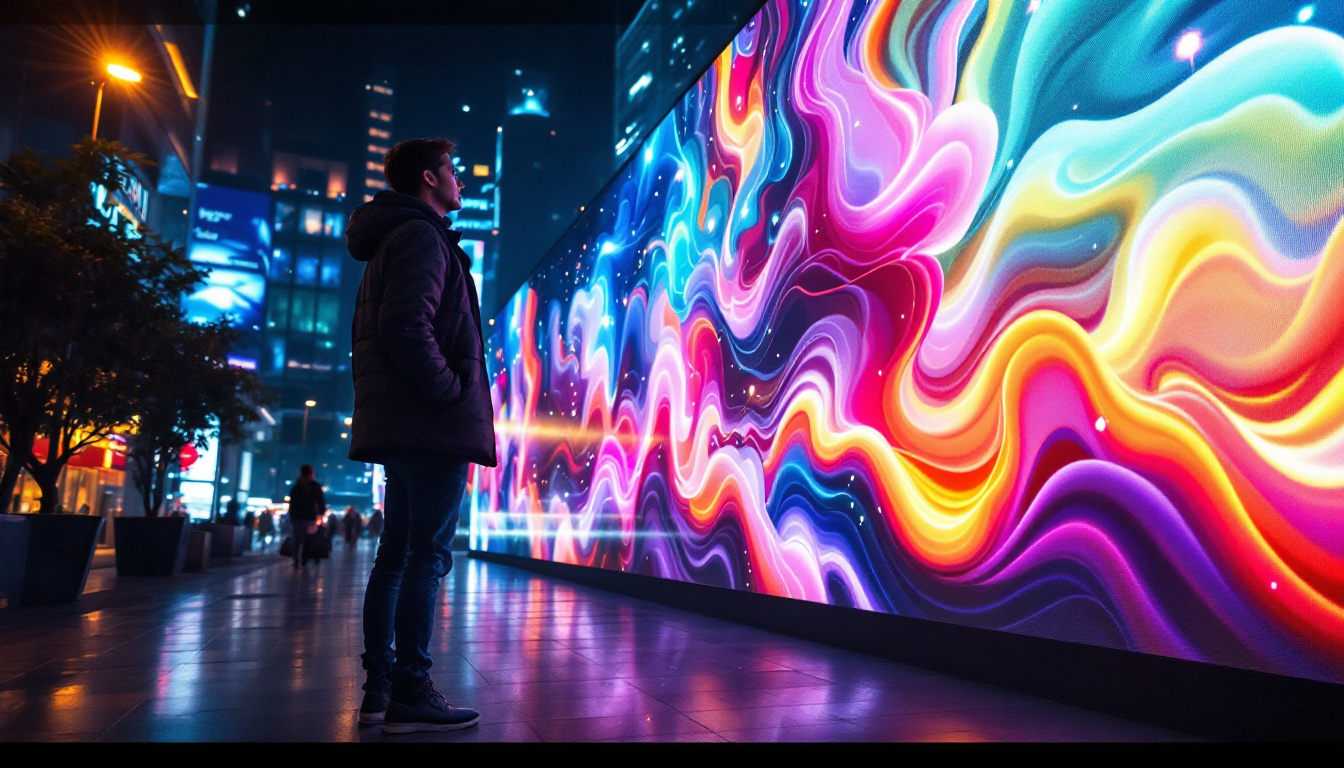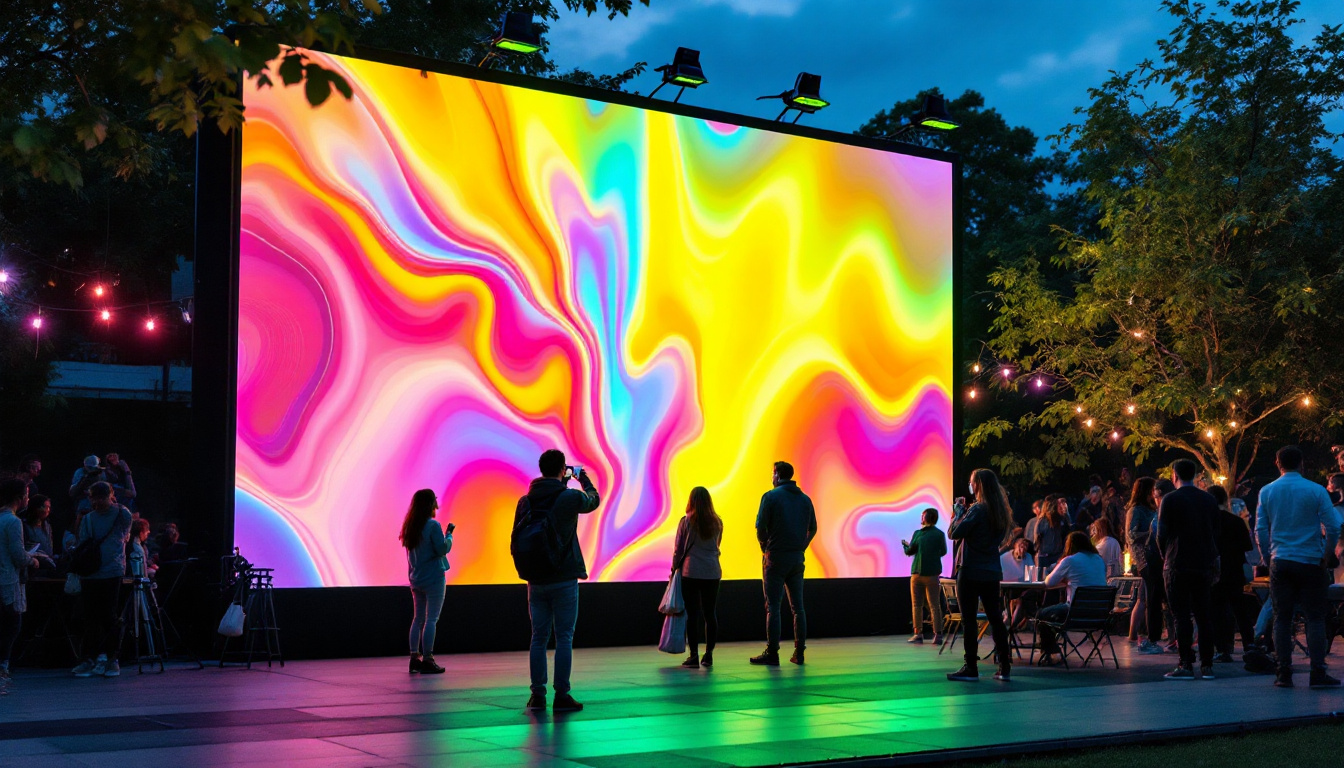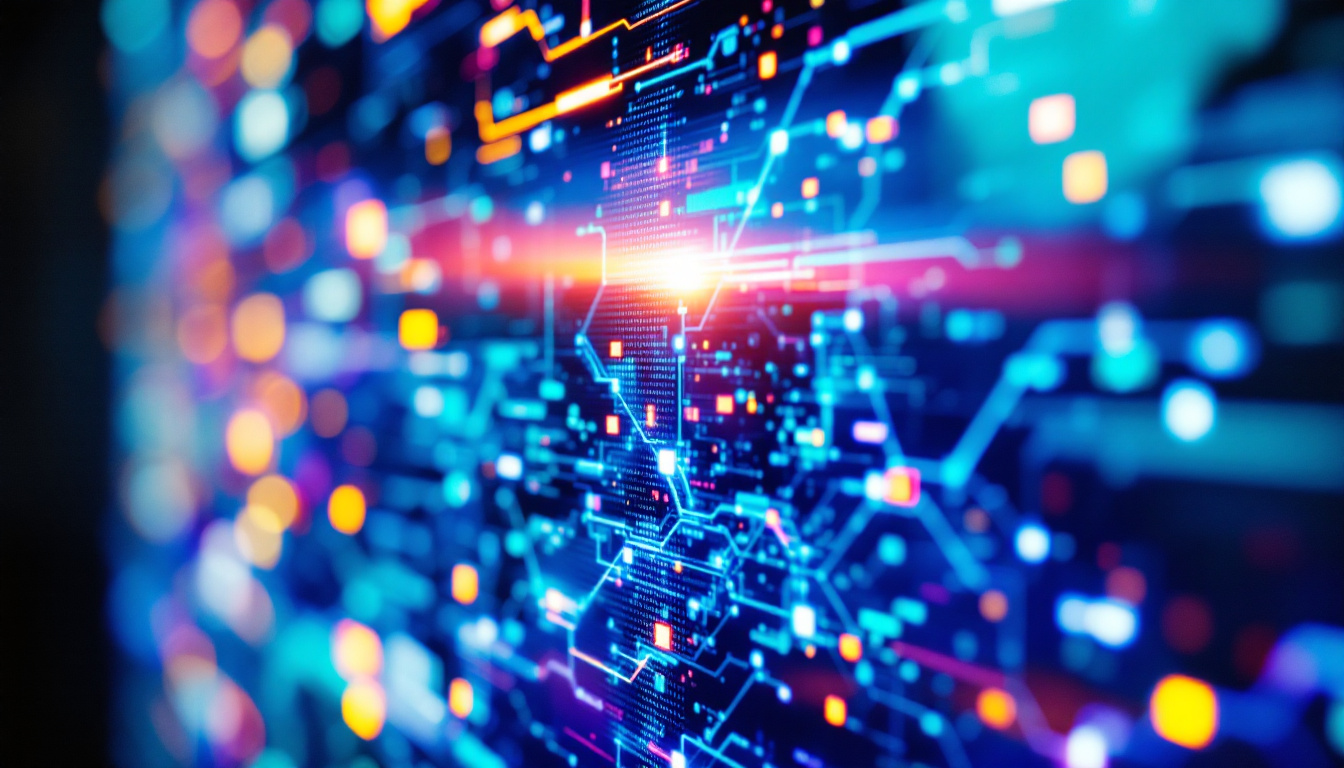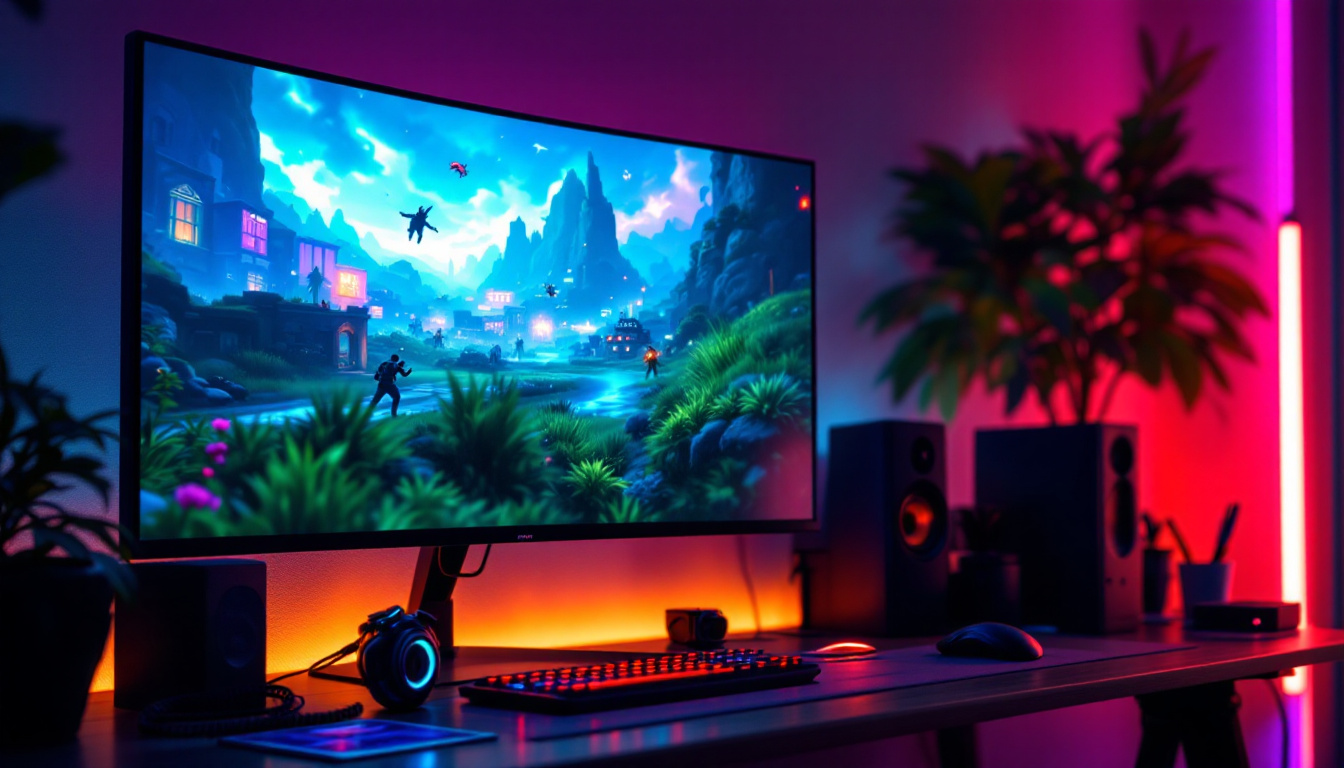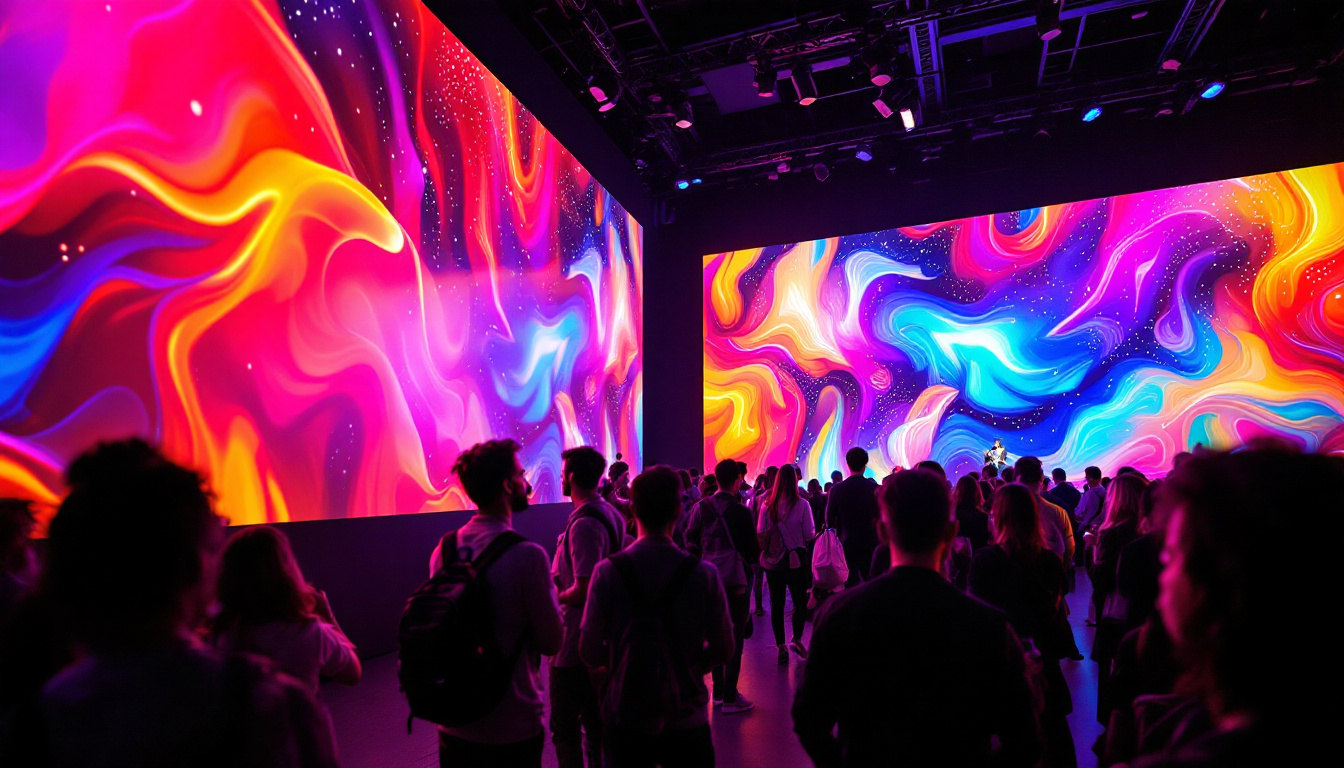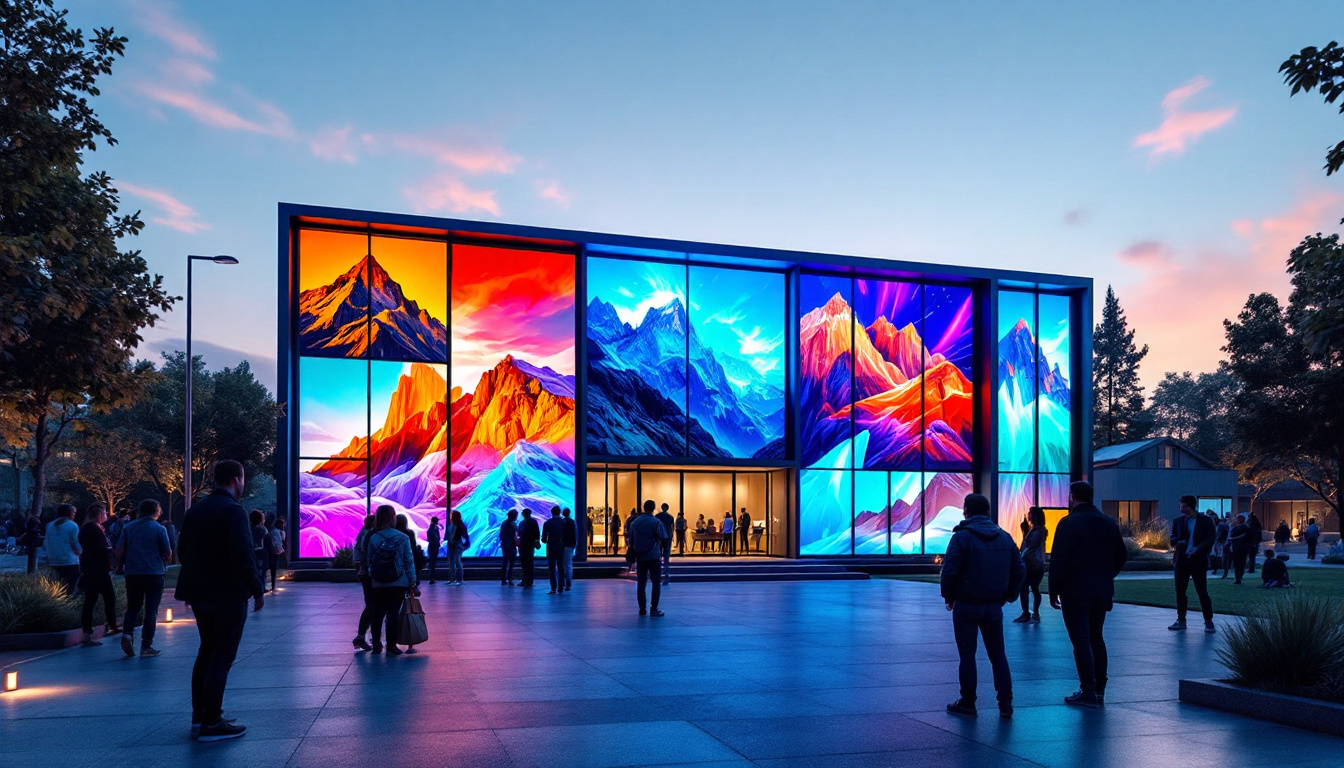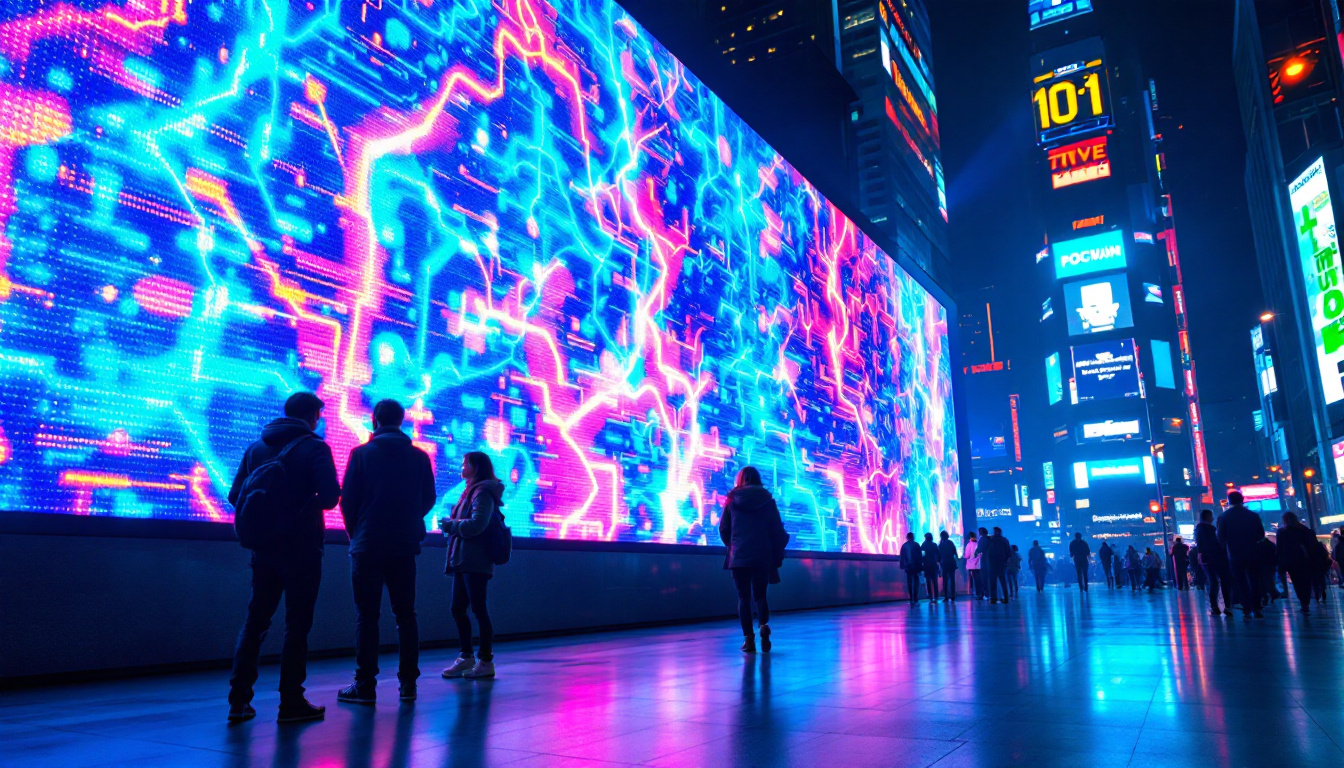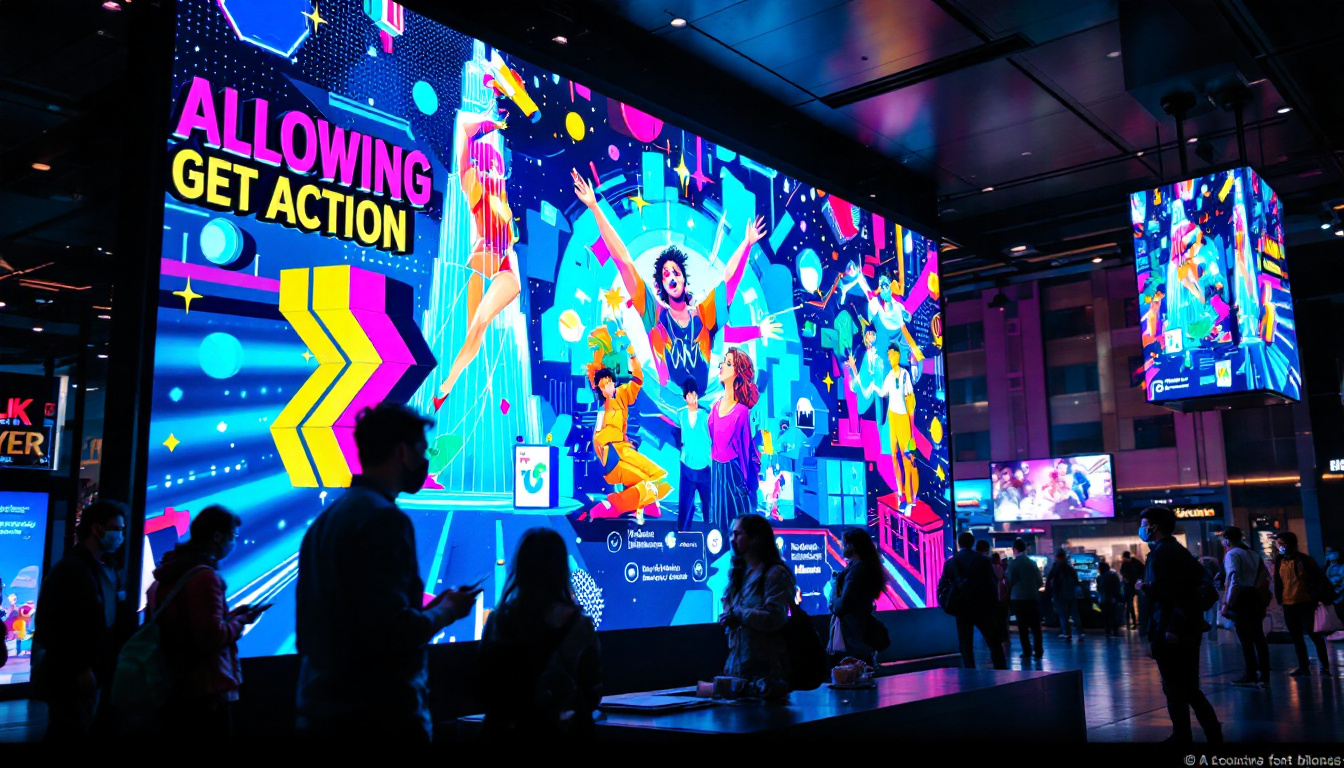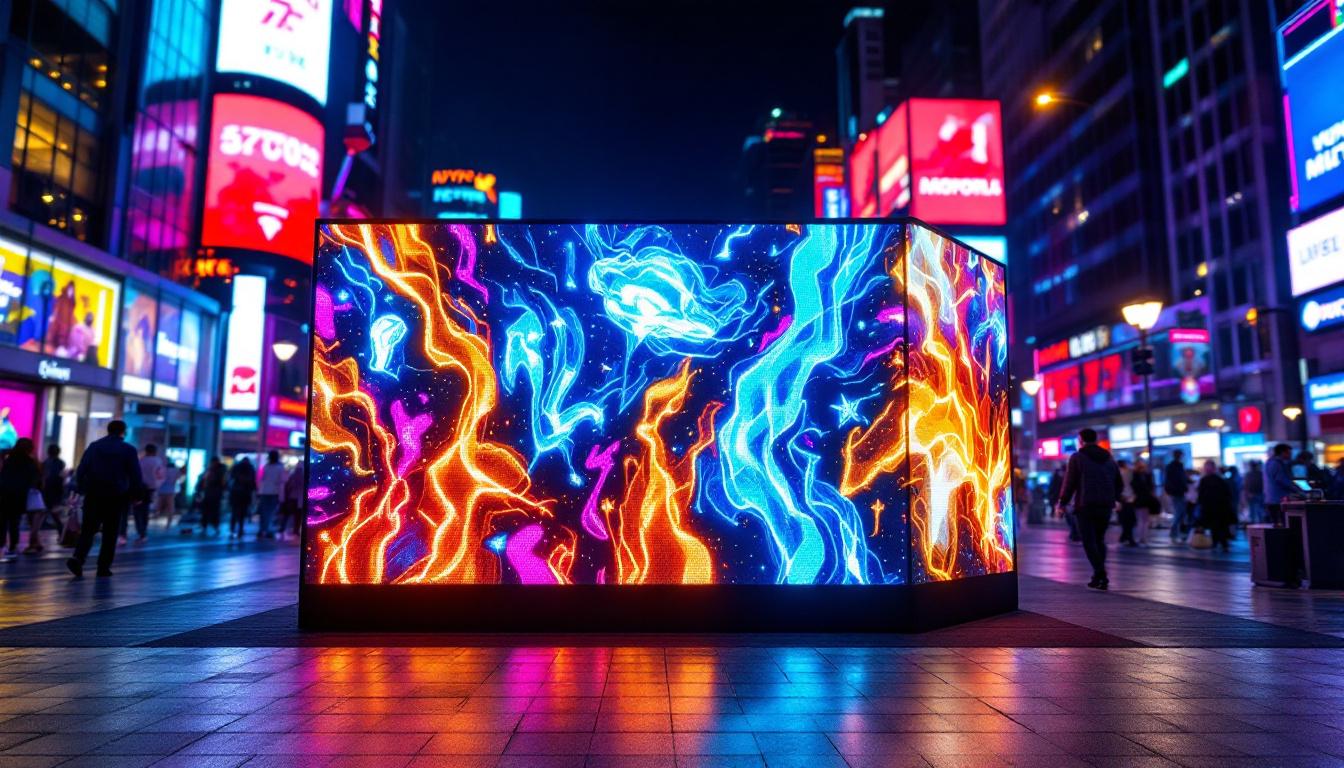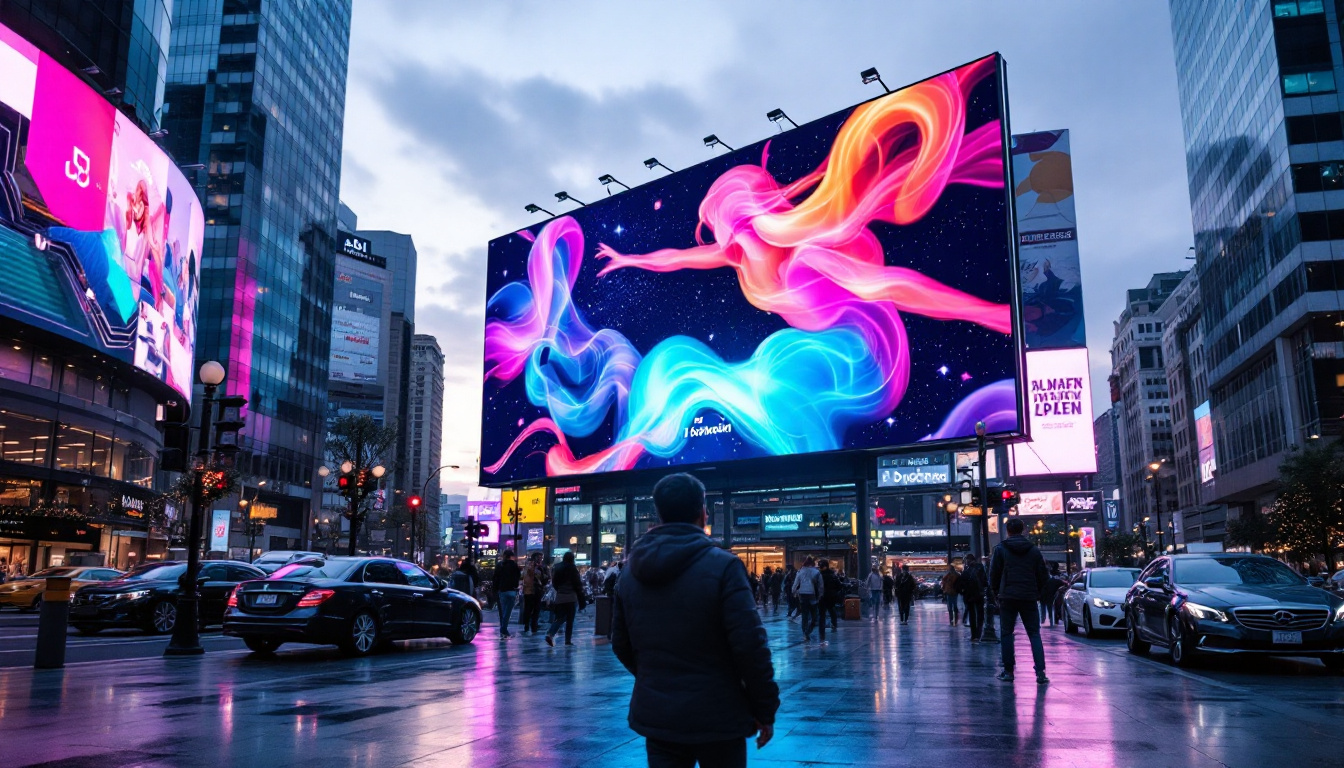In the modern digital age, high-resolution screens have become an integral part of our daily lives. From smartphones to large-scale televisions, the demand for crisp, vibrant displays continues to rise. One of the most popular technologies driving this demand is the LED display. This article delves into the intricacies of LED displays, exploring their mechanisms, benefits, and applications.
Understanding LED Technology
LED, or Light Emitting Diode, is a semiconductor device that emits light when an electric current passes through it. This technology has revolutionized the way displays are designed and manufactured. Unlike traditional display technologies, such as LCDs, which rely on backlighting, LED displays utilize individual light-emitting diodes to create images directly.
The Basics of LED Functionality
At the core of LED technology is the principle of electroluminescence. When electrons move through a semiconductor material, they release energy in the form of photons, which produces visible light. This process allows for a more energy-efficient and brighter display compared to older technologies.
LED displays can be categorized into two primary types: passive-matrix and active-matrix. Passive-matrix displays are simpler and less expensive, but they offer lower resolution and slower refresh rates. Active-matrix displays, on the other hand, utilize a grid of transistors to control individual pixels, resulting in higher resolution and faster response times. This distinction is crucial for applications where image clarity and speed are paramount, such as in gaming or high-definition video playback.
Types of LED Displays
LED displays come in various forms, each designed for specific applications. The most common types include:
- Direct View LED: These displays consist of individual LEDs arranged in a grid to form an image. They are commonly used in billboards and large video screens.
- LED-backlit LCD: This technology combines LCD panels with LED backlighting, enhancing brightness and color accuracy.
- MicroLED: A newer technology that uses microscopic LEDs, offering superior brightness, contrast, and energy efficiency.
In addition to these common types, there are also specialized LED displays, such as transparent LED screens, which allow for unique applications in retail and advertising by enabling visibility through the display itself. These screens can create stunning visual effects while maintaining a level of transparency that traditional displays cannot achieve. Furthermore, flexible LED displays are gaining traction, allowing for innovative designs in architecture and product design, where screens can be curved or shaped to fit unconventional spaces.
Another exciting development in LED technology is the integration of smart features, enabling displays to connect to the internet and interact with users in real time. This capability opens up a world of possibilities for advertising, information dissemination, and interactive experiences. As LED technology continues to evolve, the potential applications seem limitless, paving the way for advancements in both consumer electronics and professional display solutions.
Benefits of LED Displays
LED displays offer numerous advantages over traditional display technologies, making them a preferred choice for a wide range of applications.
Enhanced Image Quality
One of the most significant benefits of LED displays is their ability to produce high-quality images. With better contrast ratios, vibrant colors, and sharper details, LED displays deliver an immersive viewing experience. This is particularly important for applications such as gaming, graphic design, and video editing, where precision and clarity are paramount. The ability to display a wide color gamut allows for more accurate color reproduction, which is crucial for professionals who rely on color accuracy for their work. Furthermore, the rapid response time of LED displays minimizes motion blur, enhancing the experience for fast-paced video content and gaming.
Energy Efficiency
LED technology is known for its energy efficiency. Compared to traditional incandescent or fluorescent lighting, LEDs consume significantly less power. This not only reduces electricity bills but also contributes to a lower carbon footprint, making LED displays a more environmentally friendly option. In fact, many businesses are now opting for LED displays as part of their sustainability initiatives, as the reduced energy consumption translates into less strain on power resources. Additionally, the lower heat output of LED displays means that they require less cooling, further enhancing their energy-saving capabilities.
Longevity and Durability
LED displays are designed to last. With a lifespan often exceeding 50,000 hours, they outlast many other display technologies. Additionally, their solid-state construction makes them more resistant to shock and vibration, which is particularly beneficial in commercial settings where durability is essential. This resilience also means that LED displays are less likely to suffer from burn-in issues that can plague older technologies like plasma screens. As a result, businesses can rely on LED displays for long-term use without the constant need for replacement, making them a cost-effective investment over time.
Versatility in Applications
Another noteworthy advantage of LED displays is their versatility in various applications. From large-scale outdoor billboards to small indoor screens, LED technology can be adapted to meet diverse needs. In retail environments, for example, LED displays can be used for dynamic advertising, showcasing promotions and engaging customers with eye-catching visuals. In the realm of sports, stadiums utilize massive LED screens to enhance the spectator experience, providing live feeds, replays, and interactive content. This adaptability not only allows for creative marketing strategies but also enhances communication in public spaces, making information more accessible to audiences.
Improved Viewing Angles
LED displays also excel in providing wide viewing angles, ensuring that the image quality remains consistent regardless of the viewer’s position. This is particularly advantageous in settings like conference rooms or auditoriums, where audiences may be seated at various angles. Unlike some traditional displays that suffer from color distortion or reduced brightness when viewed from the side, LED displays maintain their performance, allowing everyone in the room to enjoy a clear and vibrant image. This feature is essential for presentations, lectures, and collaborative work environments, where effective communication is key to success.
Applications of LED Displays
The versatility of LED displays allows them to be used in a myriad of applications across various industries.
Consumer Electronics
In the realm of consumer electronics, LED displays are ubiquitous. From smartphones and tablets to televisions and monitors, LED technology enhances the user experience by providing vibrant visuals and energy efficiency. High-definition televisions with LED displays have become the standard, offering viewers an unparalleled viewing experience. Furthermore, advancements in OLED (Organic Light Emitting Diode) technology have taken LED displays to new heights, enabling deeper blacks and more vivid colors. This innovation not only improves picture quality but also allows for thinner and more flexible screens, paving the way for new designs in consumer devices.
Advertising and Marketing
LED displays have transformed the advertising landscape. Digital billboards and signage utilize bright, eye-catching LED screens to attract attention and convey messages effectively. Their ability to display dynamic content allows businesses to update advertisements in real-time, optimizing marketing strategies and enhancing customer engagement. Moreover, the integration of LED technology with data analytics enables advertisers to target specific demographics based on location and time, making campaigns more effective. This level of customization is particularly beneficial in high-traffic areas, where the right message at the right time can significantly boost brand visibility and sales.
Industrial and Commercial Use
In industrial settings, LED displays are used for everything from monitoring equipment to providing information in control rooms. Their durability and clarity make them ideal for environments where reliability is crucial. Additionally, in commercial spaces, LED displays are often used for wayfinding and information dissemination, improving customer experience in malls, airports, and other public venues. The use of LED technology in these environments not only enhances visibility but also contributes to energy savings, as these displays consume less power compared to traditional lighting solutions. Furthermore, the ability to integrate LED displays with smart technology allows for interactive features, such as touch screens and real-time updates, creating a more engaging experience for users navigating complex spaces.
Comparison with Other Display Technologies
While LED displays have many advantages, it is essential to compare them with other technologies to understand their unique benefits and limitations.
LED vs. LCD
LED and LCD displays often get conflated due to the use of LED backlighting in many LCD panels. However, the key difference lies in how they produce images. LCDs require a backlight, while LED displays generate light on a pixel-by-pixel basis. This results in better contrast and color accuracy in LED displays compared to traditional LCDs.
LED vs. OLED
Organic Light Emitting Diode (OLED) technology is another competitor in the display market. OLED displays offer superior color accuracy and contrast ratios due to their ability to turn off individual pixels completely, resulting in true blacks. However, they can be more expensive and may suffer from burn-in issues over time. LED displays, while not as high-performing in terms of contrast, offer greater longevity and are generally more affordable.
Future of LED Display Technology
The future of LED display technology looks promising, with continuous advancements paving the way for even more innovative applications.
Emerging Trends
One of the most exciting trends in LED technology is the development of flexible displays. These displays can bend and curve, opening up new possibilities for design and functionality in consumer electronics and advertising. Additionally, advancements in microLED technology are expected to lead to even higher resolutions and improved energy efficiency.
Integration with Smart Technology
As smart technology continues to evolve, LED displays are being integrated with artificial intelligence and the Internet of Things (IoT). This integration allows for more personalized and interactive experiences, such as smart mirrors and digital signage that can adapt content based on viewer behavior.
Conclusion
LED displays have revolutionized the way we interact with visual content, offering superior image quality, energy efficiency, and durability. Their applications span across various industries, making them a versatile choice for both consumers and businesses. As technology continues to advance, the future of LED displays promises even more exciting developments, ensuring that they remain at the forefront of display technology.
Understanding the intricacies of LED displays not only enhances appreciation for this technology but also informs better purchasing decisions for consumers and businesses alike. As the demand for high-resolution screens continues to grow, LED displays will undoubtedly play a pivotal role in shaping the visual landscape of the future.
Explore Cutting-Edge LED Displays with LumenMatrix
Ready to elevate your visual experience with the latest in LED display technology? Look no further than LumenMatrix, a leader in innovative LED solutions. From captivating Indoor and Outdoor LED Wall Displays to dynamic Vehicle and Sports LED Displays, LumenMatrix offers a wide array of products designed to make your brand shine. Discover the possibilities with our LED Poster Displays, Floor LED Displays, Custom LED solutions, and more. Embrace the future of visual communication and check out LumenMatrix LED Display Solutions today to see how we can help you engage your audience and deliver your message with unparalleled impact and clarity.

